We are no longer building saddle trees, but we have two videos about how Western saddles fit horses available on our westernsaddlefit.com website.
Rawhiding a Saddle Tree
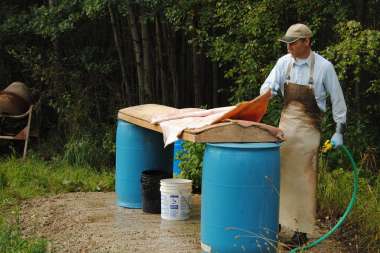 |
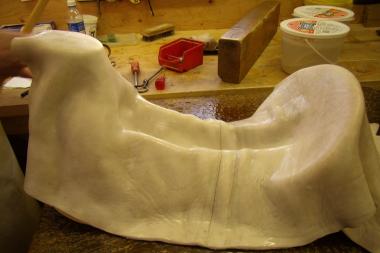 |
| We make our own rawhide from hides we buy directly from a slaughter house. The hides are placed in water as soon as they are home, and once made into rawhide they are either kept soaking in water, which is changed often, or frozen until use. | Once the tree has its three coats of marine varnish and is dry, the top cover is draped over it and positioned. |
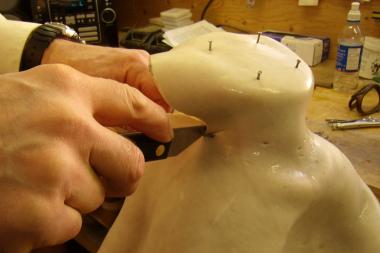 |
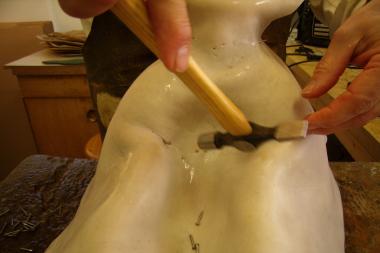 |
| The hide is tacked into position on the horn and some trimming is begun. | Stainless steel ring shank nails are used to nail the hide to the tree anywhere it could pull away as it is drying. |
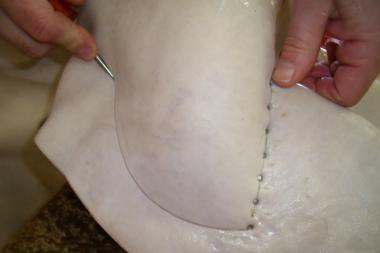 |
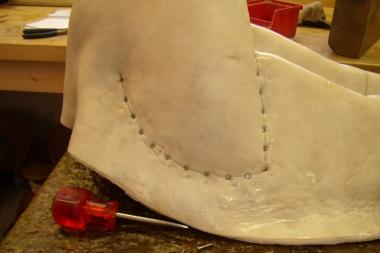 |
| Lines are scribed where the fork connects to the bars, | and nails are carefully placed to hold the rawhide tight around the bottom of the fork. |
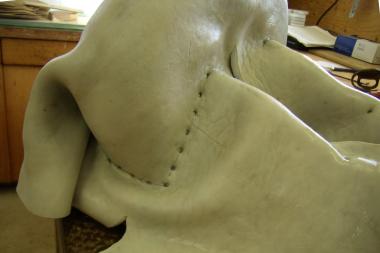 |
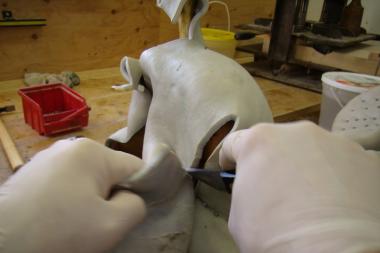 |
| A swell fork ends up with excess hide over the swells | which is trimmed to make the fork seams. |
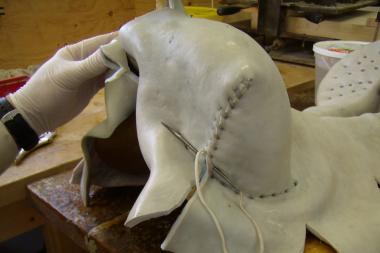 |
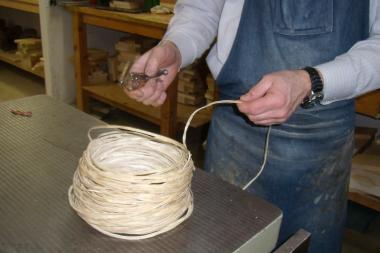 |
| The fork seams are then sewn. | We use deer rawhide lace, which we make here from local deer hides, to sew the hide on our trees. |
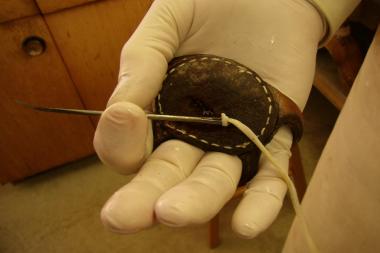 |
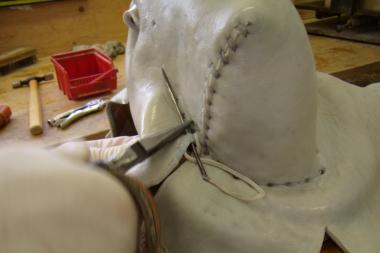 |
| A leather palm protector with a metal insert is worn since rawhide is tough stuff, even with a very sharp needle. | Pliers are often needed to pull the needle through the tight spots. |
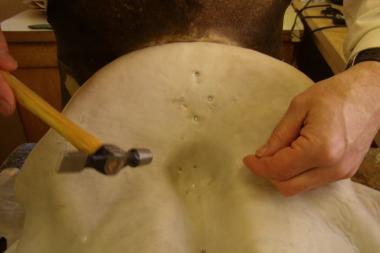 |
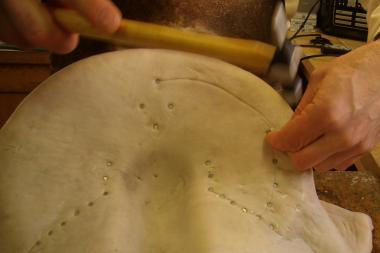 |
| Nailing the cantle dish starts by nailing the center, | then the line where the cantle meets the bar. The rest of the nails are then placed. |
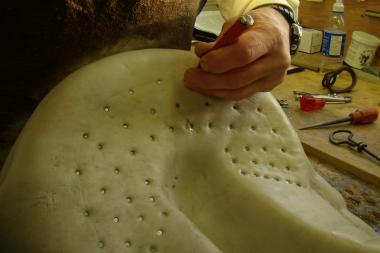 |
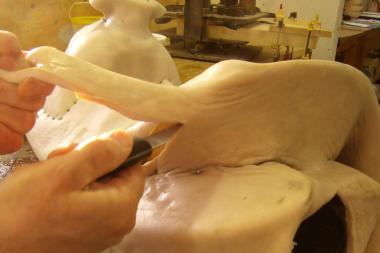 |
| The pattern of nails varies in number of rows depending on height of cantle. The nails are hammered in place and then a nail set is used to finish setting them. | With the area for the cantle thong temporarily tacked in place, the excess hide is trimmed for the cantle seams. |
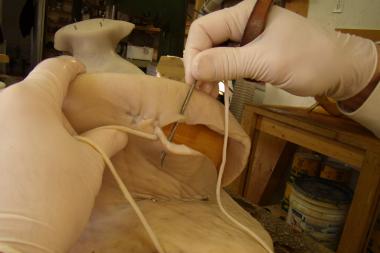 |
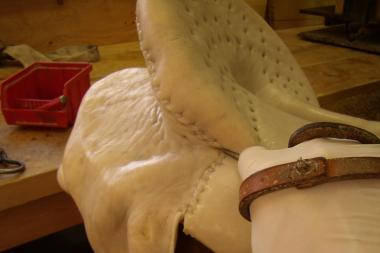 |
| Stitching starts at the center of the cantle | and the seam continues down and over the bar, where it will be covered by the cantle thong. |
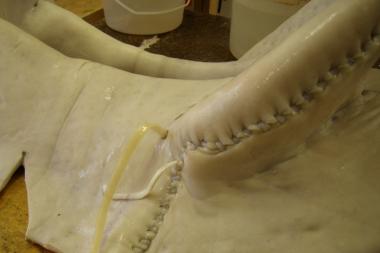 |
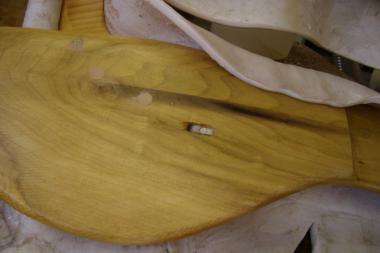 |
| The cantle thong is an extra thick, wide section of deer hide. It goes down through a hole in the rawhide, through the hole drilled in the tree at the front corner of the cantle | and is nailed into the groove carved for it on the underside of the bar. |
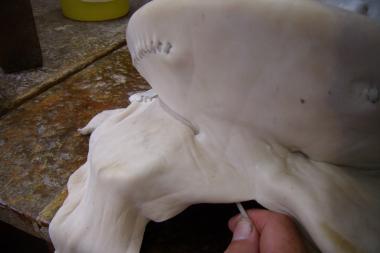 |
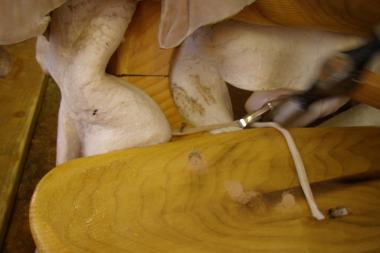 |
| In the same way, a hole is made through the rawhide at the cantle gullet for the cantle thong to go through |
before it is pulled tight and nailed to the underside of the cantle. |
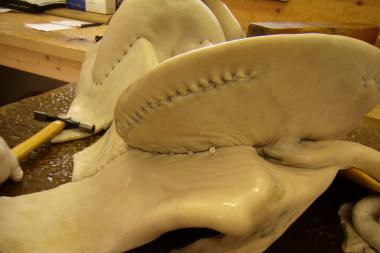 |
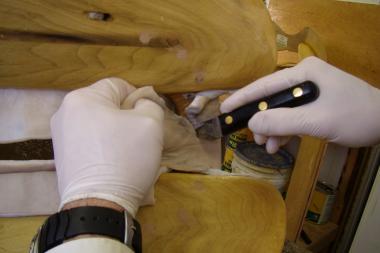 |
| Longer nails are placed to hold it tight to the cantle and seated deep with a nail set. | The hide is then trimmed under the cantle gullet. |
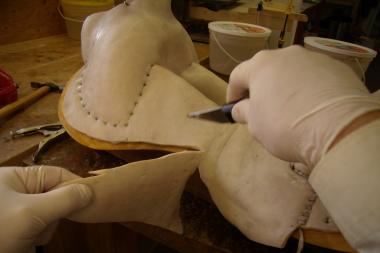 |
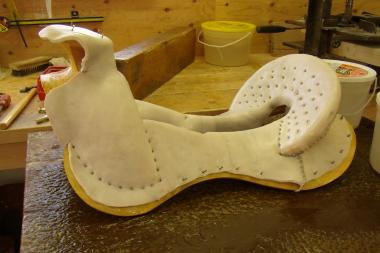 |
| The hide is trimmed | and tacked in place over the whole top of the bars. |
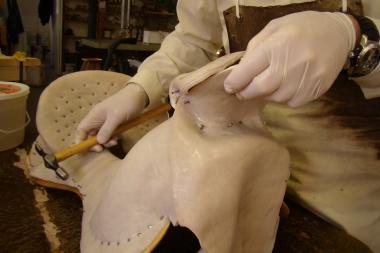 |
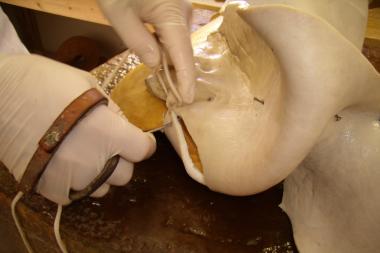 |
| The gullet piece is tacked in place, top and bottom. | Stitching is started underneath the gullet on one side, |
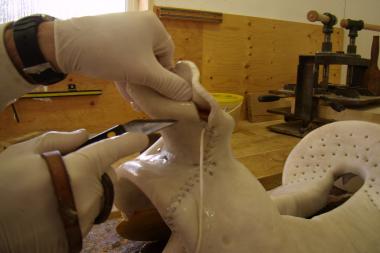 |
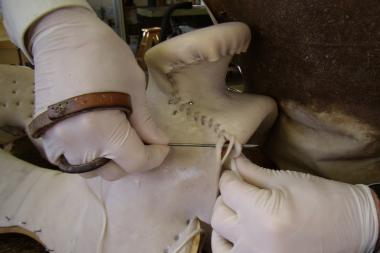 |
| and the hide is trimmed as it is stitched up the front of the fork, below the horn cap, | and back down the other side to finish under the gullet. |
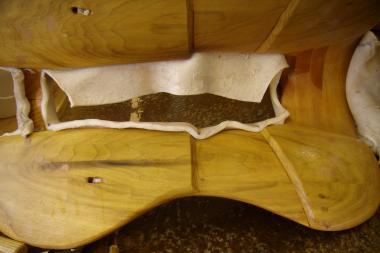 |
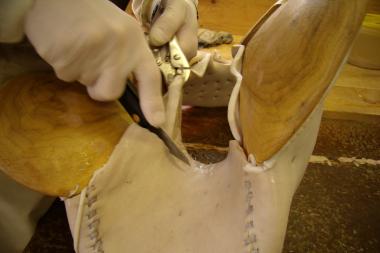 |
| The hide is trimmed on the underside of the bars and the top nails in the stirrup groove are put in to hold it in place | before the seam at the back of the gullet is trimmed |
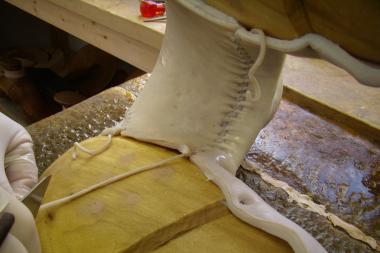 |
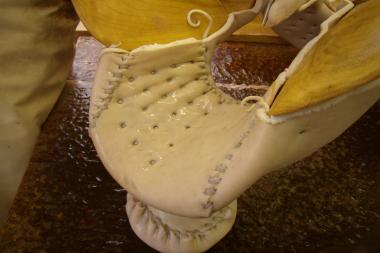 |
| and sewn. Lace ends are left long at this time and incorporated into the bar seams to hold them tight. | The gullet is then nailed. |
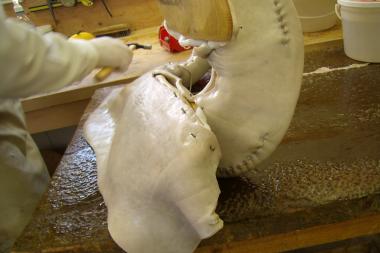 |
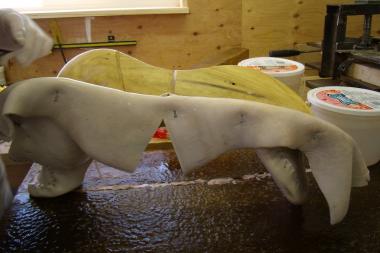 |
| The bar piece is aligned and tacked in place on the bottom | and the top of the bar. |
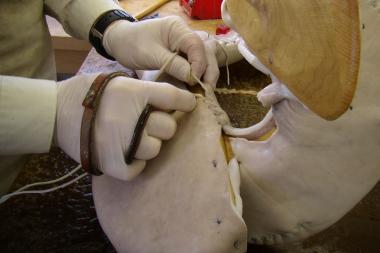 |
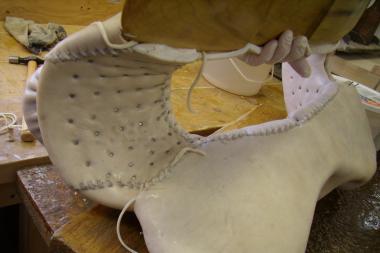 |
| Stitching starts at the cantle and goes forward | weaving the long ends left from previous stitching into the seam. |
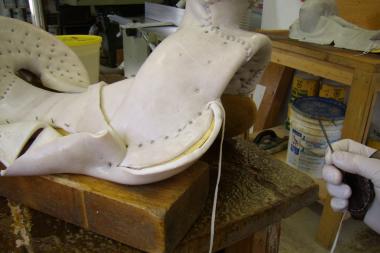 |
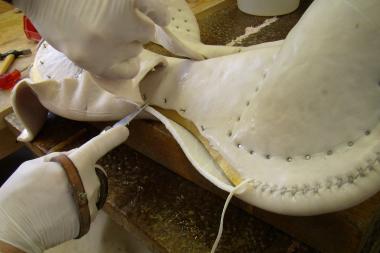 |
| The seam continues around the front corner of the gullet | and goes back along the top of the bar, with the hide getting trimmed |
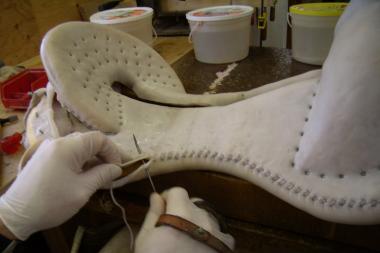 |
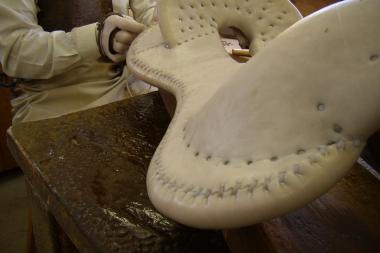 |
| just ahead of the stitching. | The outside seam is finished and taken around the back corner of the bar |
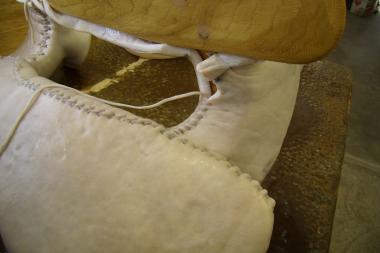 |
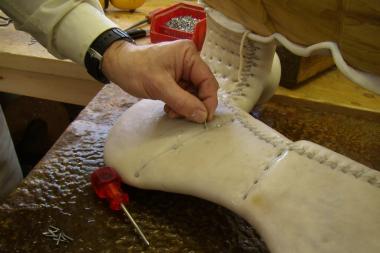 |
| to finish in the middle of the cantle gullet. | The stirrup slot is nailed front and back. |
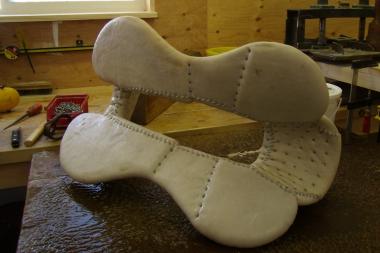 |
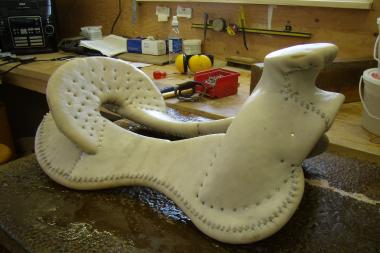 |
| The other bar is sewn in the same manner | and the tree is finished. |
